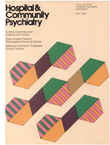Tardive Dyskinesia and Institutional Practice: Current Issues and Guidelines
Abstract
Despite increasing public and legal pressures to minimize the occurrence of tardive dyskinesia, the practicing clinician often feels there are no alternatives to the use of neuroleptic medication in the treatment of psychosis. However, there are many clinical situations in which the use of neuroleptics may be avoided; guidelines for such situations, including the treatment of affective disorders and of chronic schizophrenia, are presented. The authors also discuss the use of alternative treatment programs and psychosocial interventions that may allow significant reduction in neuroleptics, and they describe new areas of research aimed at preventing and treating tardive dyskinesia.
Access content
To read the fulltext, please use one of the options below to sign in or purchase access.- Personal login
- Institutional Login
- Sign in via OpenAthens
- Register for access
-
Please login/register if you wish to pair your device and check access availability.
Not a subscriber?
PsychiatryOnline subscription options offer access to the DSM-5 library, books, journals, CME, and patient resources. This all-in-one virtual library provides psychiatrists and mental health professionals with key resources for diagnosis, treatment, research, and professional development.
Need more help? PsychiatryOnline Customer Service may be reached by emailing [email protected] or by calling 800-368-5777 (in the U.S.) or 703-907-7322 (outside the U.S.).



